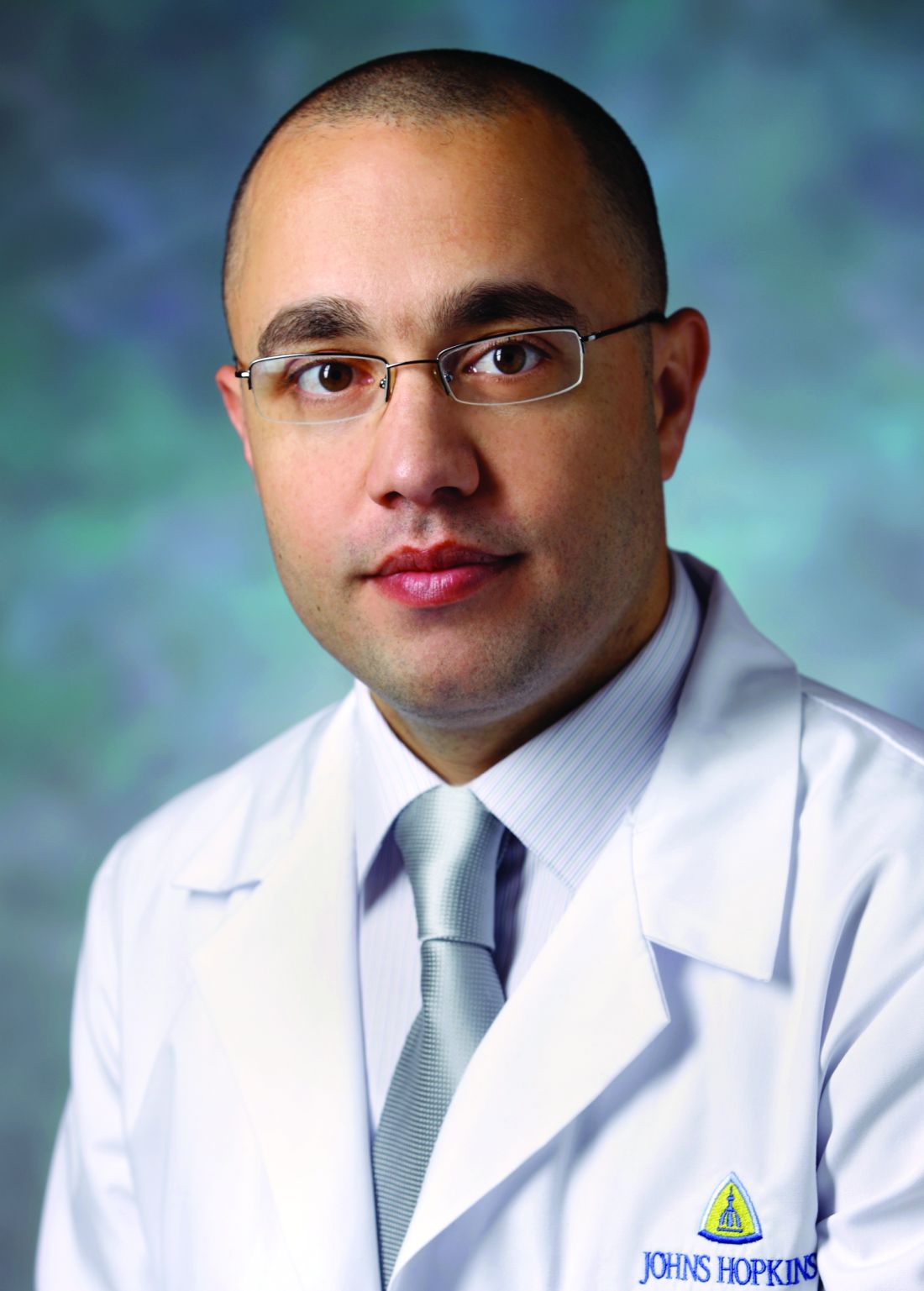User login
Authored by Mouen A. Khashab, MD, director of therapeutic endoscopy at Johns Hopkins Medicine, Baltimore; Andrew Y. Wang, MD, AGAF, chief of interventional endoscopy, University of Virginia, Charlottesville; and, Qiang Cai, MD, PhD, chief of gastroenterology, Ochsner LSU Health Shreveport (La.), the update covers patient selection, procedural considerations, adverse events (AEs), and other topics.
“G-POEM is being performed worldwide to treat patients with refractory gastroparesis,” the investigators wrote in Gastroenterology). “G-POEM is an overall safe procedure with high technical success rates, particularly when performed by an endoscopist experienced in third-space endoscopy. Even if the durable clinical success of G-POEM is in the 50% to 60% range, this represents a huge clinical benefit to patients with refractory gastroparesis, which is a disease associated with substantial morbidity, poor quality of life, and a paucity of safe and effective treatments.”
The authors listed treatment alternatives, noting how associated clinical data have fallen short.
“Although endoscopic pyloric balloon dilation, intrapyloric botulinum toxin injection, gastric electrical stimulation, and transpyloric stenting have been used in patients [with gastroparesis] who have not responded to medical therapy, published studies concerning these therapies have been inconsistent, shown no benefit, or lacked methodologic rigor,” they wrote.
Patient selection
G-POEM should be considered in patients with medically refractory gastroparesis due to diabetes, prior surgery, or idiopathic causes. Candidates should undergo endoscopy to confirm no mechanical obstruction, as well as a solid-phase gastric emptying scan to confirm delayed emptying, with ideal candidates showing at least 20% retention at 4 hours, as this threshold has been linked with better clinical outcomes.
G-POEM is most beneficial when moderate to severe symptoms are present, the investigators wrote, particularly vomiting and nausea. The Gastroparesis Cardinal Symptom Index (GCSI) can be used to determine severity, with a score greater than 2 indicating moderate to severe presentation.
Procedural considerations
The CPU offers detailed procedural considerations, including preparation and equipment, technical guidance, and postprocedural strategy.
“G-POEM should only be performed by interventional endoscopists with expertise or training in third-space endoscopy,” Dr. Khashab and colleagues wrote. “Although experience in endoscopic submucosal dissection (ESD) is not mandatory before performing G-POEM, it likely shortens the learning curve.”
Equipment minimums are also described, including “a high-definition gastroscope, with a waterjet, affixed with a clear distal cap” and “a modern electrosurgical generator capable of modulating power based on tissue resistance and circuit impedance.”
While G-POEM is typically performed via a greater-curvature approach, similar outcomes have been documented for a lesser-curvature approach, Dr. Khashab and colleagues wrote. This alternative technique may increase difficulty of pyloromyotomy, they added.
Postprocedural care may involve an overnight stay, according to the update, with an upper GI study on the subsequent day to ensure no contrast leakage, though this is not mandatory.
Adverse events
“G-POEM is generally safe when performed by trained and/or experienced endoscopists, and AEs are uncommon,” the investigators wrote. “However, serious AEs can occur and have been reported.”
Reported AEs include capnoperitoneum, inadvertent mucosotomy, thermal-mucosal injury, abdominal pain, bleeding, gastric ulceration, and dumping syndrome.
Insurance companies called to action
After reviewing emerging data, the authors suggested the time has come to consider G-POEM as a routine, evidence-based procedure that deserves appropriate reimbursement by financial stakeholders.
“Many insurers still consider G-POEM investigational and refuse to cover this procedure for patients with medically refractory gastroparesis,” they wrote. “As the safety and clinical effectiveness of G-POEM is now well supported, insurance companies and payors should cover G-POEM for patients with significant gastroparesis.”
The clinical practice update was commissioned and approved by the American Gastroenterological Association. The investigators disclosed relationships with Boston Scientific, Medtronic, and Olympus, among others.
Authored by Mouen A. Khashab, MD, director of therapeutic endoscopy at Johns Hopkins Medicine, Baltimore; Andrew Y. Wang, MD, AGAF, chief of interventional endoscopy, University of Virginia, Charlottesville; and, Qiang Cai, MD, PhD, chief of gastroenterology, Ochsner LSU Health Shreveport (La.), the update covers patient selection, procedural considerations, adverse events (AEs), and other topics.
“G-POEM is being performed worldwide to treat patients with refractory gastroparesis,” the investigators wrote in Gastroenterology). “G-POEM is an overall safe procedure with high technical success rates, particularly when performed by an endoscopist experienced in third-space endoscopy. Even if the durable clinical success of G-POEM is in the 50% to 60% range, this represents a huge clinical benefit to patients with refractory gastroparesis, which is a disease associated with substantial morbidity, poor quality of life, and a paucity of safe and effective treatments.”
The authors listed treatment alternatives, noting how associated clinical data have fallen short.
“Although endoscopic pyloric balloon dilation, intrapyloric botulinum toxin injection, gastric electrical stimulation, and transpyloric stenting have been used in patients [with gastroparesis] who have not responded to medical therapy, published studies concerning these therapies have been inconsistent, shown no benefit, or lacked methodologic rigor,” they wrote.
Patient selection
G-POEM should be considered in patients with medically refractory gastroparesis due to diabetes, prior surgery, or idiopathic causes. Candidates should undergo endoscopy to confirm no mechanical obstruction, as well as a solid-phase gastric emptying scan to confirm delayed emptying, with ideal candidates showing at least 20% retention at 4 hours, as this threshold has been linked with better clinical outcomes.
G-POEM is most beneficial when moderate to severe symptoms are present, the investigators wrote, particularly vomiting and nausea. The Gastroparesis Cardinal Symptom Index (GCSI) can be used to determine severity, with a score greater than 2 indicating moderate to severe presentation.
Procedural considerations
The CPU offers detailed procedural considerations, including preparation and equipment, technical guidance, and postprocedural strategy.
“G-POEM should only be performed by interventional endoscopists with expertise or training in third-space endoscopy,” Dr. Khashab and colleagues wrote. “Although experience in endoscopic submucosal dissection (ESD) is not mandatory before performing G-POEM, it likely shortens the learning curve.”
Equipment minimums are also described, including “a high-definition gastroscope, with a waterjet, affixed with a clear distal cap” and “a modern electrosurgical generator capable of modulating power based on tissue resistance and circuit impedance.”
While G-POEM is typically performed via a greater-curvature approach, similar outcomes have been documented for a lesser-curvature approach, Dr. Khashab and colleagues wrote. This alternative technique may increase difficulty of pyloromyotomy, they added.
Postprocedural care may involve an overnight stay, according to the update, with an upper GI study on the subsequent day to ensure no contrast leakage, though this is not mandatory.
Adverse events
“G-POEM is generally safe when performed by trained and/or experienced endoscopists, and AEs are uncommon,” the investigators wrote. “However, serious AEs can occur and have been reported.”
Reported AEs include capnoperitoneum, inadvertent mucosotomy, thermal-mucosal injury, abdominal pain, bleeding, gastric ulceration, and dumping syndrome.
Insurance companies called to action
After reviewing emerging data, the authors suggested the time has come to consider G-POEM as a routine, evidence-based procedure that deserves appropriate reimbursement by financial stakeholders.
“Many insurers still consider G-POEM investigational and refuse to cover this procedure for patients with medically refractory gastroparesis,” they wrote. “As the safety and clinical effectiveness of G-POEM is now well supported, insurance companies and payors should cover G-POEM for patients with significant gastroparesis.”
The clinical practice update was commissioned and approved by the American Gastroenterological Association. The investigators disclosed relationships with Boston Scientific, Medtronic, and Olympus, among others.
Authored by Mouen A. Khashab, MD, director of therapeutic endoscopy at Johns Hopkins Medicine, Baltimore; Andrew Y. Wang, MD, AGAF, chief of interventional endoscopy, University of Virginia, Charlottesville; and, Qiang Cai, MD, PhD, chief of gastroenterology, Ochsner LSU Health Shreveport (La.), the update covers patient selection, procedural considerations, adverse events (AEs), and other topics.
“G-POEM is being performed worldwide to treat patients with refractory gastroparesis,” the investigators wrote in Gastroenterology). “G-POEM is an overall safe procedure with high technical success rates, particularly when performed by an endoscopist experienced in third-space endoscopy. Even if the durable clinical success of G-POEM is in the 50% to 60% range, this represents a huge clinical benefit to patients with refractory gastroparesis, which is a disease associated with substantial morbidity, poor quality of life, and a paucity of safe and effective treatments.”
The authors listed treatment alternatives, noting how associated clinical data have fallen short.
“Although endoscopic pyloric balloon dilation, intrapyloric botulinum toxin injection, gastric electrical stimulation, and transpyloric stenting have been used in patients [with gastroparesis] who have not responded to medical therapy, published studies concerning these therapies have been inconsistent, shown no benefit, or lacked methodologic rigor,” they wrote.
Patient selection
G-POEM should be considered in patients with medically refractory gastroparesis due to diabetes, prior surgery, or idiopathic causes. Candidates should undergo endoscopy to confirm no mechanical obstruction, as well as a solid-phase gastric emptying scan to confirm delayed emptying, with ideal candidates showing at least 20% retention at 4 hours, as this threshold has been linked with better clinical outcomes.
G-POEM is most beneficial when moderate to severe symptoms are present, the investigators wrote, particularly vomiting and nausea. The Gastroparesis Cardinal Symptom Index (GCSI) can be used to determine severity, with a score greater than 2 indicating moderate to severe presentation.
Procedural considerations
The CPU offers detailed procedural considerations, including preparation and equipment, technical guidance, and postprocedural strategy.
“G-POEM should only be performed by interventional endoscopists with expertise or training in third-space endoscopy,” Dr. Khashab and colleagues wrote. “Although experience in endoscopic submucosal dissection (ESD) is not mandatory before performing G-POEM, it likely shortens the learning curve.”
Equipment minimums are also described, including “a high-definition gastroscope, with a waterjet, affixed with a clear distal cap” and “a modern electrosurgical generator capable of modulating power based on tissue resistance and circuit impedance.”
While G-POEM is typically performed via a greater-curvature approach, similar outcomes have been documented for a lesser-curvature approach, Dr. Khashab and colleagues wrote. This alternative technique may increase difficulty of pyloromyotomy, they added.
Postprocedural care may involve an overnight stay, according to the update, with an upper GI study on the subsequent day to ensure no contrast leakage, though this is not mandatory.
Adverse events
“G-POEM is generally safe when performed by trained and/or experienced endoscopists, and AEs are uncommon,” the investigators wrote. “However, serious AEs can occur and have been reported.”
Reported AEs include capnoperitoneum, inadvertent mucosotomy, thermal-mucosal injury, abdominal pain, bleeding, gastric ulceration, and dumping syndrome.
Insurance companies called to action
After reviewing emerging data, the authors suggested the time has come to consider G-POEM as a routine, evidence-based procedure that deserves appropriate reimbursement by financial stakeholders.
“Many insurers still consider G-POEM investigational and refuse to cover this procedure for patients with medically refractory gastroparesis,” they wrote. “As the safety and clinical effectiveness of G-POEM is now well supported, insurance companies and payors should cover G-POEM for patients with significant gastroparesis.”
The clinical practice update was commissioned and approved by the American Gastroenterological Association. The investigators disclosed relationships with Boston Scientific, Medtronic, and Olympus, among others.
FROM GASTROENTEROLOGY

